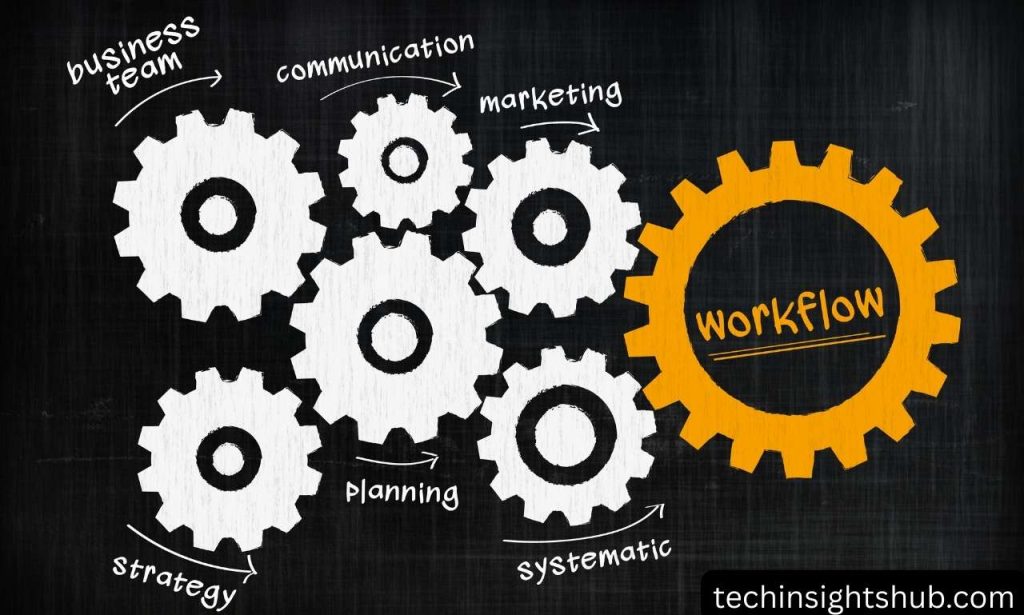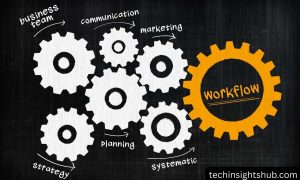Ansible has transformed the way we handle IT automation. Many tech professionals use it daily for configuration management and application deployment. But sometimes single job templates aren’t enough for complex operations. That’s where workflow job templates come in handy. They connect multiple job templates into a seamless sequence. Think of workflows as the conductors of your automation orchestra. They direct various jobs to be performed in harmony. This article will guide you through creating and managing workflow job templates effectively. Workflows solve problems that individual jobs can’t handle alone. They allow jobs to run conditionally based on the success or failure of previous tasks. You can pause operations for human approval when needed. This makes workflows perfect for complex deployments and release processes. Let’s explore how to use workflow job templates in ansible.
Job Templates

Job templates form the backbone of Ansible automation. They represent a reusable definition of an Ansible job. Each template contains an inventory, playbook, credentials, and other parameters. These components work together to execute specific tasks consistently. Job templates can run independently or as part of larger workflows.
Creating effective job templates requires careful planning. Start by identifying discrete tasks in your automation process. Break down complex operations into manageable chunks. This modular approach makes troubleshooting easier and increases reusability across different scenarios. Well-designed job templates lead to more robust workflows.
Templates support various options to enhance flexibility. You can prompt users for variables at launch time. Environment variables can be set to affect playbook behavior. Surveys allow for the collection of additional information before execution begins. All these features make job templates powerful building blocks.
The success of your workflows depends on well-structured job templates. Take time to organize them logically. Group related templates and apply consistent naming conventions. This organization pays dividends when building complex workflows. It creates clear relationships between components and simplifies maintenance.
Create a Workflow
Let’s move on to creating your first workflow job template. In the Automation Controller interface, navigate to Templates and click the Add button. Select “Workflow Job Template” from the dropdown menu. This brings up the workflow creation form. Enter a descriptive name and select your organization.
After saving the basic details, you’ll see the workflow visualizer. This graphical interface helps build your workflow structure. The visualizer displays a blank canvas with only a “START” node. This node represents the beginning of your workflow execution. All other nodes will branch from this starting point.
To add your first job template, click on the START node. Select “Add Node” from the menu that appears. You’ll see options for different node types. For a basic workflow, choose “Job Template” and select from your existing templates. This becomes your first workflow step.
Now, you can extend the workflow by adding more nodes. Click on your first job template node. Select “Add Node” again to create a subsequent step. Each connection between nodes represents a transition in your workflow, and these transitions occur based on the outcome of the parent node.
Workflow construction follows a logical pattern of paths to success and failure. From each node, you can define what happens next. A successful job can trigger one set of actions, while a failure can trigger another path entirely. This branching creates flexible automation scenarios. It handles both ideal conditions and exceptional cases.
Each node in your workflow can have multiple outgoing connections, which represent different possible outcomes. The standard options include “On Success” and “On Failure” paths. Some nodes support additional outcome types for more complex scenarios. This creates a decision tree for your automation process.
Before finalizing your workflow, review the entire structure. Ensure all paths lead to sensible outcomes. Check that failure scenarios have appropriate handling. Once satisfied, save your workflow template. It’s now ready for execution, just like any other job template.
Create a Workflow with Approval
Sometimes automation needs human oversight. Introducing approval nodes addresses this need. Approval nodes pause workflow execution until authorized by a user. This feature adds a human element to your automation process. It’s perfect for sensitive operations requiring verification.
To add an approval node to your workflow, click on a node. Select “Add Node” and choose the “Approval” type. This creates a special node that doesn’t execute automation directly. Instead, it generates a notification and waits for user interaction. The workflow remains paused until someone responds.
When setting up approval nodes, configure their parameters carefully. Assign appropriate users with approval permissions. Set a descriptive approval name and message. This helps approvers understand what they’re authorizing. Include relevant details about the workflow’s purpose and implications.
Approval notifications reach designated users through various channels, but email notifications are most common. Recipients receive information about the pending approval request. They can then log into the Controller to approve or deny the workflow continuation.
The approval interface presents options to continue or abort the workflow. Approvers can review details before making their decision. They might examine previous job results or check external systems. This informed decision point enhances operational safety. It prevents fully automated processes from causing unintended consequences.
After an approval decision, the workflow follows the appropriate path. An approved workflow continues to the next defined node. A rejected workflow might follow a different branch or terminate completely. Both outcomes can trigger notifications to relevant stakeholders, keeping everyone informed about automation progress.
Complex approval schemes can involve multiple checkpoints. Different teams might approve different stages of a workflow. For example, security teams could approve changes before the implementation teams. This creates a validation chain matching your organization’s structure. It distributes responsibility appropriately across departments.
Create a Workflow with Fail and Recovery
Robust automation plans for failure. Workflow job templates excel at handling failure scenarios. They can detect when jobs fail and execute recovery procedures automatically. This capability creates self-healing automation processes. Your workflows become resilient against common infrastructure issues.
Adding failure handling starts with creating alternative paths. From any node, add a connection with the “On Failure” edge type. This connection activates when the parent job encounters errors. The connected node represents your recovery procedure. It might perform cleanup tasks or try alternative approaches.
Recovery nodes often use specialized job templates. These templates contain playbooks designed for problem resolution. They might restore configurations from backups or clear stuck processes. The goal is to return systems to a workable state. Effective recovery templates focus on specific failure modes.
Consider notification nodes for critical failures. These inform teams about issues requiring attention. While automated recovery proceeds, humans can investigate root causes. This combination of immediate response and parallel investigation works well. It minimizes downtime while addressing underlying problems.
Another powerful pattern involves retrying operations. After detecting transient failures, workflows can wait briefly before attempting the same operation again. Many infrastructure issues resolve themselves with time. Network connectivity might return, or resource contention might ease. Retry logic captures these opportunities.
For complex recovery scenarios, create nested workflows. A primary workflow might delegate recovery to a specialized sub-workflow. This keeps the main workflow focused on normal operations. Recovery workflows can contain detailed diagnostics and multi-step resolution procedures. This separation improves maintainability.
When designing failure handling, consider the artifacts from previous nodes. Workflow jobs can access outputs from ancestor jobs. This information helps diagnose what went wrong. Recovery procedures can use these artifacts to make intelligent decisions. They adapt their approach based on specific failure characteristics.
Conclusion
Workflow job templates transform how we approach automation in Ansible. They connect discrete tasks into powerful process chains. This capability addresses real-world complexity better than individual jobs. From simple sequences to complex decision trees, workflows adapt to your needs.
The benefits extend beyond technical capabilities. Workflows improve collaboration between teams. They make automation processes visible and understandable. Approval nodes bring human judgment into automated procedures. Recovery paths build resilience against infrastructure challenges. These features create automation that works in practical environments.
Start simple when building your first workflows. Connect a few job templates in sequence. Understand how nodes interact before adding complexity. Then gradually introduce approvals and failure handling. This incremental approach builds confidence and skills. Your workflows will evolve alongside your automation maturity.
Remember that workflows represent your operational processes and should reflect your organization’s best practices. Well-designed workflows encode institutional knowledge into executable form and standardize procedures across teams and environments. This consistency improves reliability and reduces operational risk.
As you grow comfortable with workflows, explore their advanced features. Convergence points join multiple paths into unified procedures, and artifact propagation shares data between workflow stages. These capabilities enable sophisticated automation scenarios and handle complex dependencies that simple scripts cannot.
Workflow job templates represent the future of infrastructure automation. They bridge the gap between simple tasks and complete processes. Mastering them will enhance your Ansible implementation significantly. The time invested in learning workflows pays dividends in operational excellence.
Also Read: How To Prioritize User Security When Collecting Offline Data
FAQs
A job template runs a single Ansible playbook against an inventory. A workflow job template connects multiple job templates in sequence with conditional branching.
Yes, workflows can incorporate job templates from any project within your organization. This flexibility allows building comprehensive processes.
There’s no practical limit to approval nodes in workflows. You can add as many approval stages as your process requires.
The current workflow implementation runs nodes sequentially rather than in parallel. Consider this limitation when designing your workflows.




